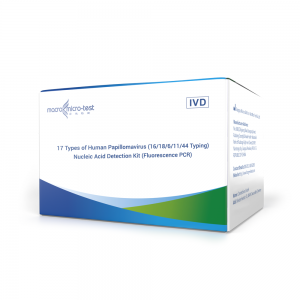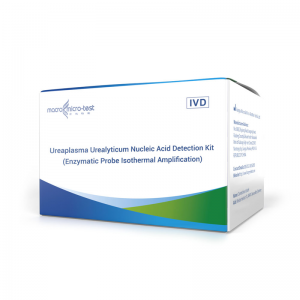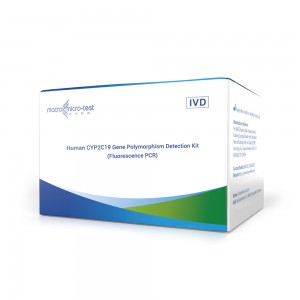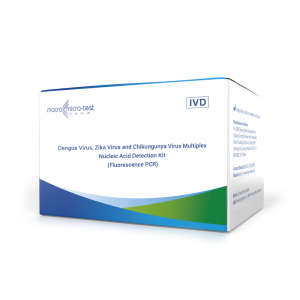Candida Albicans/Candida Tropicalis/Candida Glabrata Nucleic Acid Combined
Product name
HWTS-FG004-Candida Albicans/Candida Tropicalis/Candida Glabrata Nucleic Acid Combined Detection Kit(Fluorescence PCR)
Epidemiology
Candida is the largest normal fungal flora in the human body. It exists widely in the respiratory tract, digestive tract, urogenital tract and other organs that communicate with the outside world. Generally, it is not pathogenic and belongs to opportunistic pathogenic bacteria. Due to the extensive application of immunosuppressant and a large number of broad-spectrum antibiotics, as well as tumor radiotherapy, chemotherapy, invasive treatment, organ transplantation, the normal flora is imbalanced and candida infection occurs in the genitourinary tract and respiratory tract. Candida albicans is the most common clinically, and there are more than 16 species of non-Candida albicans pathogenic bacteria, among which C. tropicalis, C. glabrata, C. parapsilosis and C. krusei are more common. Candida albicans is an opportunistic pathogenic fungus that usually colonizes the intestinal tract, oral cavity, vagina and other mucous membranes and skin. When the body's resistance decreases or the microecology is disturbed, it can proliferate in large numbers and cause disease. Candida tropicalis is an opportunistic pathogenic fungus that widely exists in nature and human body. When the body's resistance is reduced, Candida tropicalis can cause skin, vaginal, urinary tract and even systemic infections.
In recent years, among the Candida species isolated from patients with candidiasis, Candida tropicalis is considered to be the first or second non-Candida albicans (NCAC) in the isolation rate, which mainly occurs in patients with leukemia, immunodeficiency, long-term catheterization, or treatment with broad-spectrum antibiotics. The population of Candida tropicalis infection varies greatly with geographical regions. Candida tropicalis infection population varies greatly with geographical regions. In some countries, Candida tropicalis infection even surpasses Candida albicans. The pathogenic factors include hyphae, cell surface hydrophobicity, and biofilm formation. Candida glabrata is a common pathogenic fungus of vulvovaginal candidiasis (VVC). The colonization rate and infection rate of Candida glabrata are related to the age of the population. The colonization and infection of Candida glabrata are extremely rare in infants and children, and thecolonization rate and infection rate of Candida glabrata increase significantly with age. The prevalence of Candida glabrata is related to factors such as geographical location, age, population, and the use of fluconazole.
Technical Parameters
| Storage |
-18℃ |
| Shelf-life | 12 months |
| Specimen Type | urogenital tract,sputum |
| Ct | ≤38 |
| CV | ≤5.0% |
| LoD | 1000 Copies/μL |
| Applicable Instruments | Applicable to type I detection reagent:
Applied Biosystems 7500 Real-Time PCR Systems, QuantStudio®5 Real-Time PCR Systems, SLAN-96P Real-Time PCR Systems (Hongshi Medical Technology Co., Ltd.), LineGene 9600 Plus Real-Time PCR Detection Systems (FQD-96A,Hangzhou Bioer technology), MA-6000 Real-Time Quantitative Thermal Cycler (Suzhou Molarray Co., Ltd.), BioRad CFX96 Real-Time PCR System, BioRad CFX Opus 96 Real-Time PCR System.
Applicable to type II detection reagent: EudemonTM AIO800 (HWTS-EQ007) by Jiangsu Macro & Micro-Test Med-Tech Co., Ltd. |
Work Flow
Macro & Micro-Test Viral DNA/RNA Kit (HWTS-3017) (which can be used with Macro & Micro-Test Automatic Nucleic Acid Extractor (HWTS-3006C, HWTS-3006B)), and Macro & Micro-Test Viral DNA/RNA Kit (HWTS-3017-8) (which can be used with EudemonTM AIO800 (HWTS-EQ007)) by Jiangsu Macro & Micro-Test Med-Tech Co., Ltd.The extracted sample volume is 200μL and the recommended elution volume is 150μL.








